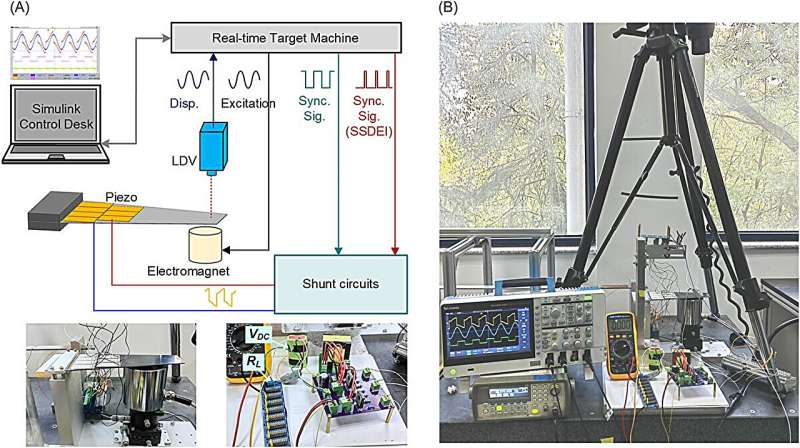This article has been reviewed according to Science X's editorial process and policies. Editors have highlighted the following attributes while ensuring the content's credibility:
fact-checked
proofread
Vibration to power: Bidirectional piezoelectric systems for future aerospace structures

Mechanical structures often suffer from vibrations that can compromise safety, comfort, and operational longevity. Traditional control methods, while effective, demand substantial energy and complex systems. The quest for efficient and sustainable alternatives has led to the exploration of piezoelectric materials. However, the limitations of current damping techniques necessitate an in-depth examination of novel approaches to achieve superior vibration suppression.
A collaborative effort from Nanjing University of Aeronautics and Astronautics, along with international partners, has yielded a study published in the International Journal of Mechanical System Dynamics on March 11, 2024. The research introduces a pioneering bidirectional energy-controlled piezoelectric shunt damping technology that promises to transform the field of vibration control.
The study's centerpiece is a flyback transformer-based switching circuit that dynamically interacts with piezoelectric elements, either extracting or injecting energy. This dual functionality allows for precise vibration attenuation, with experimental results corroborating theoretical models.
The system demonstrated an adjustable attenuation range from -5 to -25 dB and a power consumption spectrum from -13 to 25 mW, underscoring its potential for self-sustaining operation and its suitability for applications with limited power availability.
Dr. Yipeng Wu, a lead researcher and Associate Professor at Nanjing University of Aeronautics and Astronautics, said, "This technology is a game-changer, offering superior vibration attenuation without the dependency on external power. It enhances system performance, introduces new possibilities for sustainability, and points the way to autonomous vibration control solutions."
The potential applications of this technology are expansive, with the aerospace, automotive, and industrial sectors set to benefit from lighter, more efficient, and cost-effective systems.
The capacity to harvest energy from vibrations could also be pivotal for powering remote sensors and electronics, thereby bolstering the advancement of smart structures and IoT. This innovation could mark a pivotal shift towards self-reliant and intelligent mechanical systems.
More information: Yipeng Wu et al, Bidirectional energy‐controlled piezoelectric shunt damping technology and its vibration attenuation performance, International Journal of Mechanical System Dynamics (2024). DOI: 10.1002/msd2.12101


















